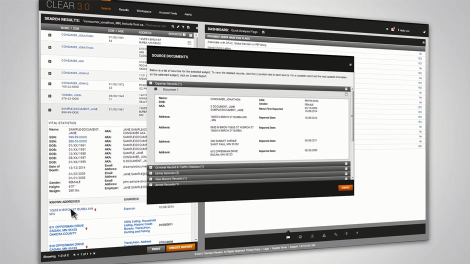What Accounts Receivable AR Are and How Businesses Use Them, with Examples

When a client doesn’t pay and we can’t collect their receivables, we call that a bad debt. When Keith gets your invoice, he’ll record it as an accounts payable in his general ledger, because it’s money he has to pay someone else. Here we’ll go over how accounts receivable works, how it’s different from accounts payable, and how properly managing your accounts receivable can get you paid faster. Implementing effective strategies for managing accounts receivable is essential to ensure timely collections and maintain healthy cash flow. Early payment programs can provide considerable flexibility when choosing which invoices to finance.
For example, it’s standard practice for a physician who has conducted a client exam to send an invoice to the client’s medical insurance company. That physician may also invoice the customer for any remaining balance the insurance did not cover. The physician’s office would then record both balances owed in its accounts receivable until it receives payment. From their end, the insurance company responsible for a portion of the client’s payment will document the balance it owes to the physician as accounts payable. Because it highlights your company’s liquidity, the accounts receivable turnover can be a great tool for financial analysis that can help you gauge your company’s financial health.
What are trade receivables?
Account receivables are classified as current assets assuming that they are due within one calendar year or fiscal year. To record a journal entry for a sale on account, one must debit a receivable and credit a revenue account. When the customer pays off their accounts, one debits cash and credits the receivable in the journal entry. The ending balance on the trial balance sheet for accounts receivable is usually a debit. Accounts receivable are the funds that customers owe your company for products or services that have been invoiced. The total value of all accounts receivable is listed on the balance sheet as current assets and include invoices that clients owe for items or work performed for them on credit.

Companies might also sell this outstanding debt to a third party—known as accounts receivable discounted or as AR factoring. Keeping track of exactly who’s behind on which payments can get tricky if you have many different customers. Some businesses will create an accounts receivable aging schedule to solve this problem. When you have a system to manage your working capital, you can stay ahead of issues like these. Calculating your business’s accounts receivable turnover ratio is one of the best ways to keep track of late payments and make sure they aren’t getting out of hand.
What Do Accounts Payable and Accounts Receivable Have in Common?
You may already have an idea of what they are, but just allow me to take a few minutes and teach you exactly what they are, how they come about and how they are recorded in the accounting records of a company. Accounts receivable, which are often times simply called AR, are the money that is owed to the company by customers for goods sold or services rendered. An aging schedule is a table that shows a company’s accounts receivable, ranging by due dates, which is usually created by accounting software. This schedule helps with tracking the upcoming payments from customers so a business owner knows when and what to expect. When you sell an item on credit, the sale is recorded in your books dependent on the receipt.
Since billing is done to claim the advances several times, this area of collectible is not reflected in accounts receivables. The payment of accounts receivable can be protected either by a letter of credit or by Trade Credit Insurance. A finance and accounting solution helps businesses save time, improve control and increase productivity by automating both invoice processing and payments.
Accounts receivable
AR is considered an asset because you’re counting on receiving that money within the timeline defined when the sale was initiated. AP is considered a liability because you will need to pay out that amount within a certain timeline. For finance leaders, excellence in accounting practices, managing cash flow, producing better reporting and maximizing working capital are top of mind, and both AR and AP are fundamental to all of these. On the other hand, there are times when a company will sell goods or services “on account.” Again, it means that there is a transaction occurring where cash is not involved. In this case, you’d debit “allowance for uncollectible accounts” for $500 to decrease it by $500. You (or your bookkeeper) record it as an account receivable on your end, because it represents money you will receive from someone else.
- Such entries are put in an accounting system where accounts receivable or accounts payable are stored.
- An aging report is a way to determine if a company is doing a good job of collecting bills and reducing accounts receivables.
- Say on-trend eyewear maker StyleVision orders $500 worth of new frames from its wholesale supplier, Frames Inc., which sends the invoice on Aug. 15 with net-30 terms and no discount for early payment.
- Now might be the right time to book a demo with AiVidens and explore the many potential benefits.
The change in A/R is represented on the cash flow statement, where the ending balance in the accounts receivable (A/R) roll-forward schedule flows in as the ending balance on the current period balance sheet. On the income statement, the $50k is recognized as revenue per accrual accounting policies but recorded as accounts receivable too since the payment has not yet been received. On the other hand, if a company’s A/R balance declines, the invoices billed to customers that paid on credit were completed and the money was received in cash.
Cite this Entry
An experienced accounting partner (or modern accounting software) can help you confidently track these transactions and use the information to plan for the future. It can include material what do you mean by receivable costs, overhead such as facility and utility fees, and contractor agreements. In contrast, accounts receivable describes a business sending an invoice to a client or customer.
This is an especially useful tactic when a competitor decides to reduce the amount of credit offered, so that a firm offering more credit is in a good position to attract them. The seller may use its accounts receivable as collateral for a loan, or sell them off to a factor in exchange for immediate cash. Receivables are prized by lenders, because they are usually easily convertible into cash within a short period of time. Lastly, if the receivables are paid back after the discount period, we record it as a regular collection of receivables.
Convert their account receivable into a long-term note
‘Trade receivables’ is generally limited to only referring to the receivables themselves. Accounts payable refers to the amount of money a business owes to its suppliers for goods or services delivered. In any buyer-supplier transaction, both accounts receivable and accounts payable are created. For tax reporting purposes, a general provision for bad debts is not an allowable deduction from profit[5]—a business can only get relief for specific debtors that have gone bad. Outstanding advances are part of accounts receivable if a company gets an order from its customers with payment terms agreed upon in advance.

Investors and lenders often review a company’s accounts receivable ratio to determine how likely it is that customers will pay their balances. It’s important to note that your business can have a high number of sales but not enough cash flow because of uncollected receivables. Uncollected accounts receivable can hurt your business by reducing your liquidity and limiting your company’s prospects. Accounts payable is a current liability account that keeps track of money that you owe to any third party. The third parties can be banks, companies, or even someone who you borrowed money from. One common example of accounts payable are purchases made for goods or services from other companies.
If you have any questions on how Synder works, feel free to ask questions in the comments, chat or book office hours with our customer service team. In case you’re curious to try things out on your own – sign up and activate your 15-day free trial (no credit card required). While the notion of accounts receivable is explained, you must have a clear idea of how the accounts receivable process works. Companies can use their accounts receivable as collateral when obtaining a loan (asset-based lending). Pools or portfolios of accounts receivable can be sold to third parties through securitization. Companies have two methods available to them for measuring the net value of accounts receivable, which is generally computed by subtracting the balance of an allowance account from the accounts receivable account.
An example of accounts receivable is an invoice that has not been paid by a customer. Accounts receivable can also include items like uncollected payments from customers, invoices that have not been settled, and any other outstanding debts owed to a business or individual. Unreliable customers who don’t pay on time can lead your company to debt and bankruptcy if you don’t pay attention to what happens to your accounts receivable balance and whether all your invoices are paid. Keep track of your customers’ accounts so that you and your business never experience liquidity problems.
Opko Health (OPK) Q2 2023 Earnings Call Transcript – The Motley Fool
Opko Health (OPK) Q2 2023 Earnings Call Transcript.
Posted: Fri, 04 Aug 2023 05:00:22 GMT [source]
Accounts receivable (AR) is an item in the general ledger (GL) that shows money owed to a business by customers who have purchased goods or services on credit. Offering them a discount for paying their invoices early—2% off if you pay within 15 days, for example—can get you paid faster and decrease your customer’s costs. If you don’t already charge a late fee for past due payments, it may be time to consider adding one. They are offering a line of credit with the idea that the customer will pay for what they received within a specific period.






